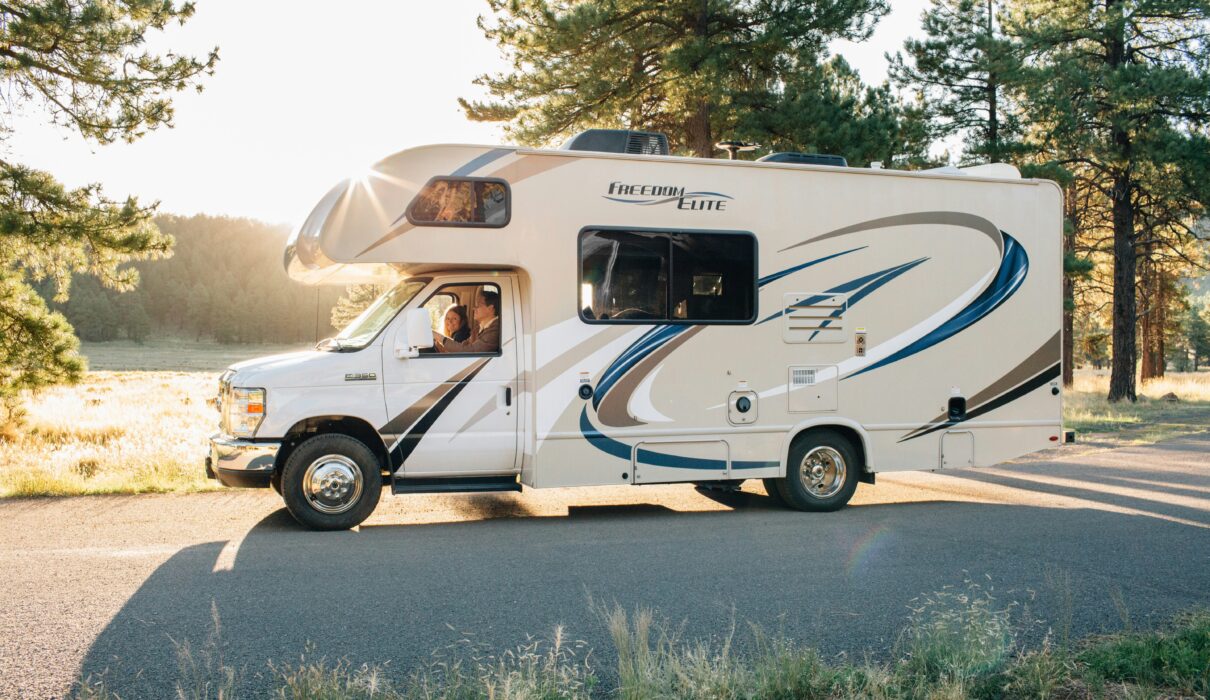So, you’ve decided to hop in an oversized gas-guzzling house on wheels and drive into the great unknown? Bold move. Somewhere between Instagram-fueled van life dreams and the crushing reality of emptying your own toilet tank, lies the truth about RV travel.
But don’t worry—I’m here to help you avoid total disaster.
Step 1: Pick the Right-Sized Rolling Disaster
Sure, that 40-foot RV with two bathrooms, a fireplace, and a chandelier looks nice. But good luck squeezing it into a parking space or making a U-turn without causing a traffic jam worthy of the evening news.
Pro tip: Stick to something under 21 feet unless you love paying for oversized vehicle permits, avoiding bridges, and knocking over street signs. Bonus: smaller rigs get better gas mileage, which means you’ll spend slightly less on fuel than a private jet.
And for those romanticizing #VanLife in a tiny campervan—hope you enjoy showering in gas station sinks and peeing in a bucket.
Step 2: Power Up (Or Live in the Dark Like a Caveman)
Your RV’s house battery powers the essentials: lights, water pump, and that all-important ability to charge your phone so you can post about your “spontaneous adventure.” Here’s how to keep the juice flowing:
- Drive for hours (yay, free power, but also soul-crushing boredom).
- Pay a campground for an electrical hookup (so much for budget travel).
- Fire up a generator (congrats, you’re now that annoying camper).
- Install solar panels (because what’s another $1,200 when your life savings are already draining?).
Solar is the best bet if you don’t want to rely on plugging in or running a noisy generator. But let’s be honest, unless you’re an electrical engineer, you’ll probably need to pay someone to install it.
Step 3: Stay Connected (or Accept That You’ll Have to Talk to People in Real Life)
If you must work remotely or binge-watch Netflix in the woods, you’ll need internet.
- Use your phone as a hotspot—just don’t expect to stream 4K movies from a remote mountain.
- Verizon and AT&T have the best coverage, so pick one unless you enjoy zero bars.
- Libraries = free WiFi and a place to look semi-respectable while mooching off the internet.
- Starbucks and McDonald’s also have WiFi, but prepare to share the space with screaming kids and people having loud conference calls.
Step 4: Where to Sleep (Because Walmart Parking Lots Get Old Fast)
Campgrounds are great if you love paying $30-$80 a night for a glorified parking space next to a family of six who brought a karaoke machine.
If you’d rather camp for free like a true rebel, here’s where to look:
- Public Lands (BLM, National Forests, etc.) – Basically free, but enjoy the “scenic” view of a dirt clearing.
- iOverlander & FreeCampsites.net – For those who don’t mind mild trespassing.
- HipCamp – Like Airbnb for camping, if you enjoy paying for the privilege of sleeping in someone’s backyard.
- Parking Lots – Walmart, Cracker Barrel, and Cabela’s will let you park overnight (no, it’s not glamorous, but neither is your budget).
Step 5: Urban Boondocking (a Fancy Term for “Sleeping in Your Car in the City”)
Sleeping in an RV in a city is tricky. Here’s how not to get the dreaded 3 AM cop knock:
- Obey parking signs unless you enjoy getting towed.
- Don’t stay in one spot for too long unless you want to be mistaken for a squatter.
- Keep things quiet—no neon lights or full-volume movie nights.
- Pretend you’re invisible. Act normal. Be cool.
Step 6: Gas is Expensive, So Here’s How to Save a Few Pennies
- Use GasBuddy to find the cheapest fuel (or just accept that you’re financially doomed).
- Drive slower (yes, it’s painful, but you’ll burn less fuel).
- Keep your tires inflated (because physics).
- Sign up for gas station rewards programs—sure, it’s just a few cents off, but at this point, you’ll take any win.
Step 7: Take the Back Roads (Unless You Like Staring at Highway Billboards)
Avoiding highways lets you actually see cool stuff, not just truck stops and billboards advertising “The World’s Largest Gator Farm.”
The best scenic routes:
- America’s Byways – Officially designated pretty roads.
- National Geographic’s Scenic Highways Guide – Because paper maps still exist, apparently.
Step 8: Splurge on a Fancy Campsite Sometimes
After weeks of showering in gas stations, you’ll want a break. Treat yourself to a glamping experience—yurts, treehouses, domes, whatever makes you feel like a functioning member of society again.
Check out:
- GlampingHub – Expensive, but you’ll feel fancy.
- Airbnb (but for camping) – Because regular camping is too basic for some people.
Step 9: Protect Your Home on Wheels (Because Bad Things Happen)
- RV Insurance – Legally required, but also saves you when you inevitably clip a gas station pole.
- Travel Insurance – For when you accidentally eat that questionable gas station sushi.
- Roadside Assistance – Because eventually, something will break.
Final Thoughts: Welcome to Your New Life of Controlled Chaos
RV travel is equal parts freedom and frustration. You’ll have stunning sunsets one day and a broken water pump the next. You’ll discover hidden gems, but also realize that emptying a sewage tank at 6 AM is part of the deal.
But hey, at least you’re not crammed into an economy seat on a plane, right? Safe travels, road warrior. 🚐💨

